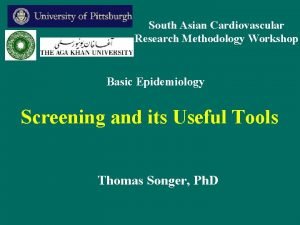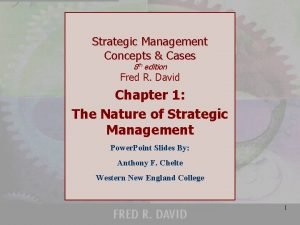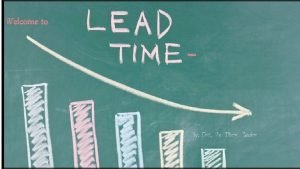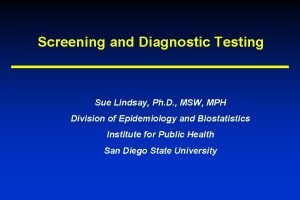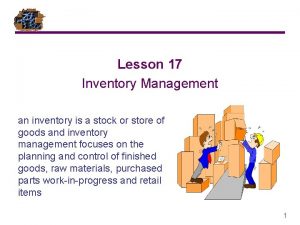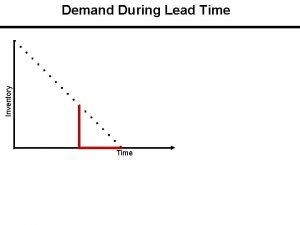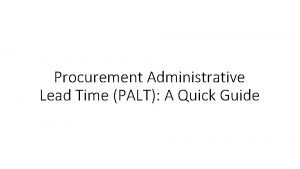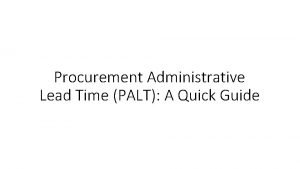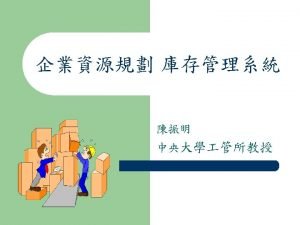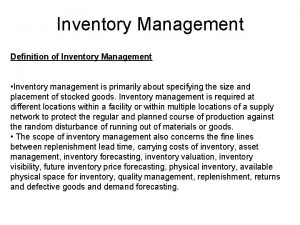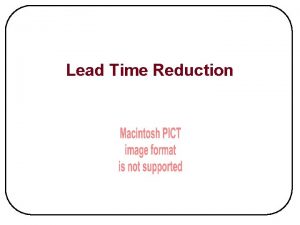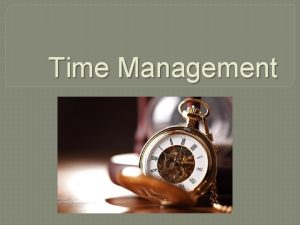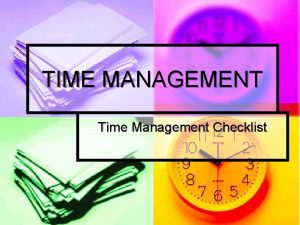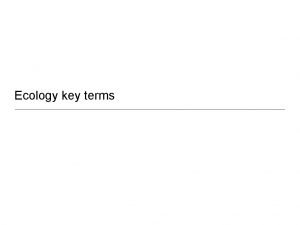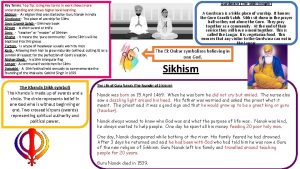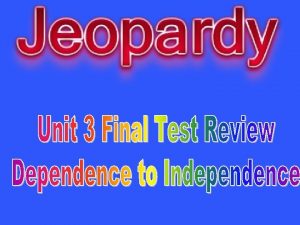Inventory Management Key Inventory Terms Lead time u





















- Slides: 21

Inventory Management Key Inventory Terms Lead time: u Holding (carrying) costs: u Ordering costs: u Shortage costs u

Inventory Management Key Inventory Terms u Lead time: Time interval between ordering and receiving the order.

Inventory Management Key Inventory Terms Holding (carrying) costs: Cost to carry an item in inventory for a length of time, usually a year. u Costs include Interest, insurance, taxes, depreciation, obsolescence, deterioration, pilferages, breakage , warehousing costs and Opportunity costs. u

Inventory Management Key Inventory Terms u Holding (carrying) costs: Holding costs are stated in two ways • Percentage of unit price or • Rupee

Inventory Management Key Inventory Terms u Ordering costs: Costs of ordering and receiving inventory. These are the actual costs that vary with the actual placement of the order.

Inventory Management Key Inventory Terms u Shortage costs: Costs when demand exceeds supply.

Inventory Management ABC Classification System An important aspect of Inventory Management is that items held in inventory are not of equal importance in terms of rupees invested, profit potential, sales or usage volume.

Inventory Management ABC Classification System Classify inventory according to ABC classification system, Rupee value up to 50 K and 500 K represent C and B respectively. Item Demand Unit Cost PC 10 Rs. 20, 000 200, 000 Monitor 5 5000 Processor 25 RAM 1000 5000 2000 Annual Value ( Rupees) Classification B ( up to Rs. 500, 000) 25, 000 C( Up to Rs. 50, 000) 125, 000 B 2, 000 A

Inventory Management Cycle Counting u u A physical count of items in inventory. Cycle counting management: • How much accuracy is needed? • When should cycle counting be performed? • Who should do it?

Economic Order Quantity Models Inventory Management u Economic order quantity model u Economic production model u Quantity discount model

Inventory Management Assumptions of EOQ Model u Only one product is involved. u Annual demand requirements known. u Demand is even throughout the year. u Lead time does not vary. u u Each order is received in a single delivery. There are no quantity discounts.

Inventory Management The Inventory Cycle Q Quantity on hand Profile of Inventory Level Over Time Usage rate Reorder point Receive order Place Receive order Lead time Place Receive order Time

Inventory Management Total Cost Annual Total cost = carrying + ordering cost TC = Q H 2 + DS Q

Inventory Management Cost Minimization Goal Annual Cost The Total-Cost Curve is U-Shaped Holding Costs Ordering Costs QO (optimal order quantity) Order Quantity (Q)

Inventory Management Deriving the EOQ Using calculus, we take the derivative of the total cost function and set the derivative (slope) equal to zero and solve for Q.

Inventory Management Minimum Total Cost The total cost curve reaches its minimum where the carrying and ordering costs are equal.

Inventory Management Example 2 u A local distributor for an international aerobic exercise machine manufacturer expects to sell approximate 10, 000 machines. Annual carrying cost is Rs. 2500 per machine and Order cost is Rs. 10, 000. The distributor Operates 300 days a year.

Inventory Management Example 2 Find EOQ? u The number of times the store will reorder? u Length of an Order Cycle? u Total Annual Cost if EOQ is ordered? u

Inventory Management Example 2 Given Data D=10, 000 machines. u H= Annual carrying cost is Rs. 2500 per machine. u S=Order cost is Rs. 10, 000. u No of The distributor Operates 300 days a year. u

Inventory Management Example 2 Calculation of EOQ Q 0= Sq Root of (2 DS)/H= Sq Root (2 X 10, 000 )/2500 =Sq Root (80, 000) =283 machines per year u The number of times the store will reorder? D/Q 0=10, 000/283=35. 34 = 35 Times u

Inventory Management Example 2 u u The Length of an Order Cycle? Q 0/D=283/10. 000=0. 0283 of a year= 0. 0283 X 300= 8. 49 days The Total Annual Cost, if EOQ is ordered TC= Carrying Cost + Ordering Cost =Q 0/2 ( H) + D/Q 0 (S) =283/2 (2500) + 10. 000/283 (10, 000) =353, 750 + 353, 353 = Rs. 707, 107 u
 Length bias vs lead time bias
Length bias vs lead time bias Length bias vs lead time bias
Length bias vs lead time bias Lead time bias vs length time bias
Lead time bias vs length time bias Lead magnesium niobate
Lead magnesium niobate Nature of strategic management
Nature of strategic management 9 key terms in strategic management
9 key terms in strategic management Polynomial degrees and terms
Polynomial degrees and terms Combine like terms
Combine like terms Key partner business model canvas
Key partner business model canvas Business model canvas tripadvisor
Business model canvas tripadvisor Start time end time and elapsed time
Start time end time and elapsed time Operations management chapter 12 inventory management
Operations management chapter 12 inventory management Lead time in community medicine
Lead time in community medicine Concept of lead time
Concept of lead time Length bias vs lead time bias
Length bias vs lead time bias Lead time bias คือ
Lead time bias คือ Safety stock formula
Safety stock formula Demand during lead time
Demand during lead time Administrative lead time
Administrative lead time Procurement administrative lead time
Procurement administrative lead time Sap sku meaning
Sap sku meaning 4 types of minor parties
4 types of minor parties
